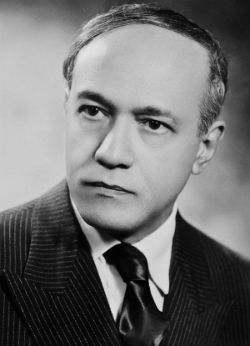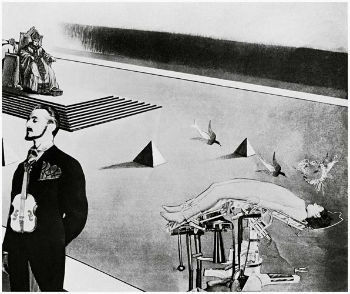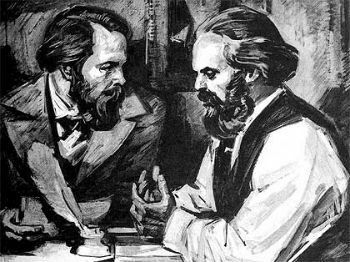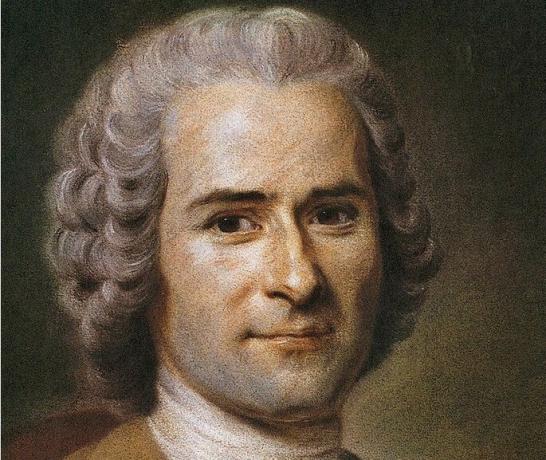Jorge de Lima, known as “the prince of Alagoas poets”, was a modernist writer. In addition, he worked as an artist, teacher and doctor.
Belonging to the second phase of modernism in Brazil, also called the “consolidation phase”, Jorge de Lima had great prominence in the poetry of 30.
Biography

Jorge Mateus de Lima was born on April 23, 1893 in the Alagoas city of União dos Palmares. He spent his childhood in his hometown and in 1902 he moved with his family to the capital: Maceió. In the school newspaper, he was already writing poems.
In 1909, Jorge enrolled in medicine in the capital of Bahia: Salvador. However, it was in Rio de Janeiro that he finished his graduation. He worked in the area of training, but at the same time he went deeper into literature.
In addition, he was involved in politics as a State Deputy. He was also Director General of Public Education and Health in Alagoas.
He also dedicated himself to the fine arts (painting on canvases, photomontages and collages) as a self-taught person, participating in some exhibitions.
His work as a plastic artist was related to the artistic vanguard of surrealism, which approached the oneiric universe.
 Photomontage by Jorge de Lima. Image from the book "Painting in Panic" (1943)
Photomontage by Jorge de Lima. Image from the book "Painting in Panic" (1943)
From 1930 onwards he moved to Rio de Janeiro. There he worked as a doctor and professor of literature. In 1935 he was elected governor of the state. He later became mayor of Rio de Janeiro.
In 1940 he received the “Grande Prize of Poetry”, granted by the Brazilian Academy of Letters (ABL).
He died in Rio de Janeiro, on November 15, 1953.
Curiosity
Jorge de Lima has applied six times to occupy a chair at the Brazilian Academy of Letters (ABL), however, he did not get the position.
Read too:
- Modernism in Brazil
- Poetry of 30
- Second Generation Modernist
- Authors of the Second Phase of Modernism in Brazil
Construction
Jorge de Lima wrote texts in verse (poems) and prose (essays, plays, novels and biographies) with a focus on Brazilian culture.
His works have as their theme the social aspects of regionalism and religion. The main works of the poet Jorge de Lima are:
- XIV Alexandrians (1914)
- Poems (1927)
- New Poems (1929)
- The lamp lighter (1932)
- The Angel (1934)
- The obscure woman (1939)
- Black Poems (1947)
- Book of Sonnets (1949)
- War in the Alley (1950)
- Invention of Orpheus (1952)
poems
To learn more about the language and themes used by Jorge de Lima, check out three poems below:
That Black Fulo
Well, it happened that it arrived
(it's been a long time)
in my grandfather's bangue
a cute black girl
called black Fulo.
That black Fulo!
That black Fulo!
O Fulô! O Fulô!
(It was Sinhá's speech)
— Go make my bed,
comb my hair,
come help to take
my clothes, Fulo!
That black Fulo!
This little black Fulo
it was crazy for the maid,
to watch over Sinha
to iron for Mister!
That black Fulo!
that black Fulo
O Fulô! O Fulô!
(It was Sinhá's speech)
come help me, O Fulô,
come shake my body
I'm sweaty, Fulo!
come scratch my itch,
come pick me up,
come swing my hammock,
come tell me a story,
I'm sleepy, Fulo!
That black Fulo!
"I was once a princess
who lived in a castle
who owned a dress
with the fish of the sea.
entered a duck's leg
it came out on the leg of a chick
the lord-king sent me
to tell you five more".
That black Fulo!
That black Fulo!
O Fulô? O Fulô?
go put it to sleep
these boys, Fulo!
"My mother combed me
my stepmother buried me
by the figs of the fig tree
that the Thrush pinched."
That black Fulo!
That black Fulo!
Fulo? O Fulô?
(It was Sinhá's speech
calling the black Fulo.)
where is my scent bottle
did your Mr. send me?
— Ah! you stole it!
Ah! you stole it!
Mr. went to see the black woman
take leather from the overseer.
The black woman took off her clothes.
Mr. said: Fulo!
(the view darkened
like the black Fulo.)
That black Fulo!
that black Fulo
O Fulô? O Fulô?
where is my lace handkerchief
where is my belt, my brooch,
where is my golden rosary
did your Mr. send me?
Ah! it was you who stole it.
Ah! it was you who stole it.
Mr. went to flog
alone the black Fulo.
The black woman took off her skirt
and she took off the head,
from inside it jumped
naked the black Fulo.
That black Fulo!
That black Fulo!
O Fulô? O Fulô?
where's your lord
that our Lord sent me?
Ah! it was you who stole it,
was it you, black Fulo?
That black Fulo!
Invention of Orpheus
fallen at night
the sea is gone,
that pile
falls and falls
silently.
diluted bronzes
are no longer voices,
beings on the road
they're not even ghosts,
birds in the branches
non-existent;
night braids
more than impalpable,
cats or cats,
not even feet in the air,
nor the silences.
Sleep is.
And a man sleeps.
Colorblind Angel
Childhood time, ash ash,
smoky weather over village and river
and tomb and lime and things I'm not worth,
covers everything I report on.
There is also this face that disappeared
and the sad mirror and the king of that deck.
I put the cards on the table. Cold game.
This king wears a scarecrow's robe.
The angel who sewed it was colorblind,
and if it was an angel, gentlemen, it is unknown,
that much is like an angel.
Those blue rags, look, it's me.
If you don't see them, it's not my fault
of walking dressed in red tunic.
Learn more about Language of Modernism.



